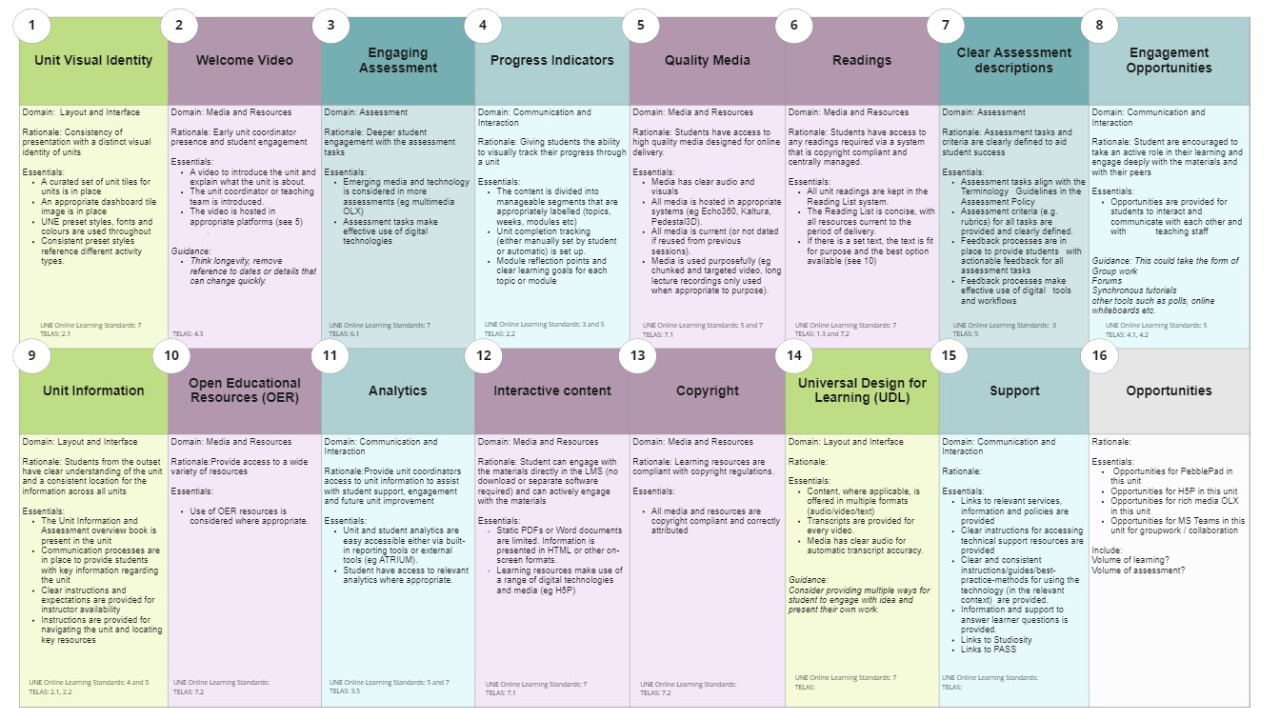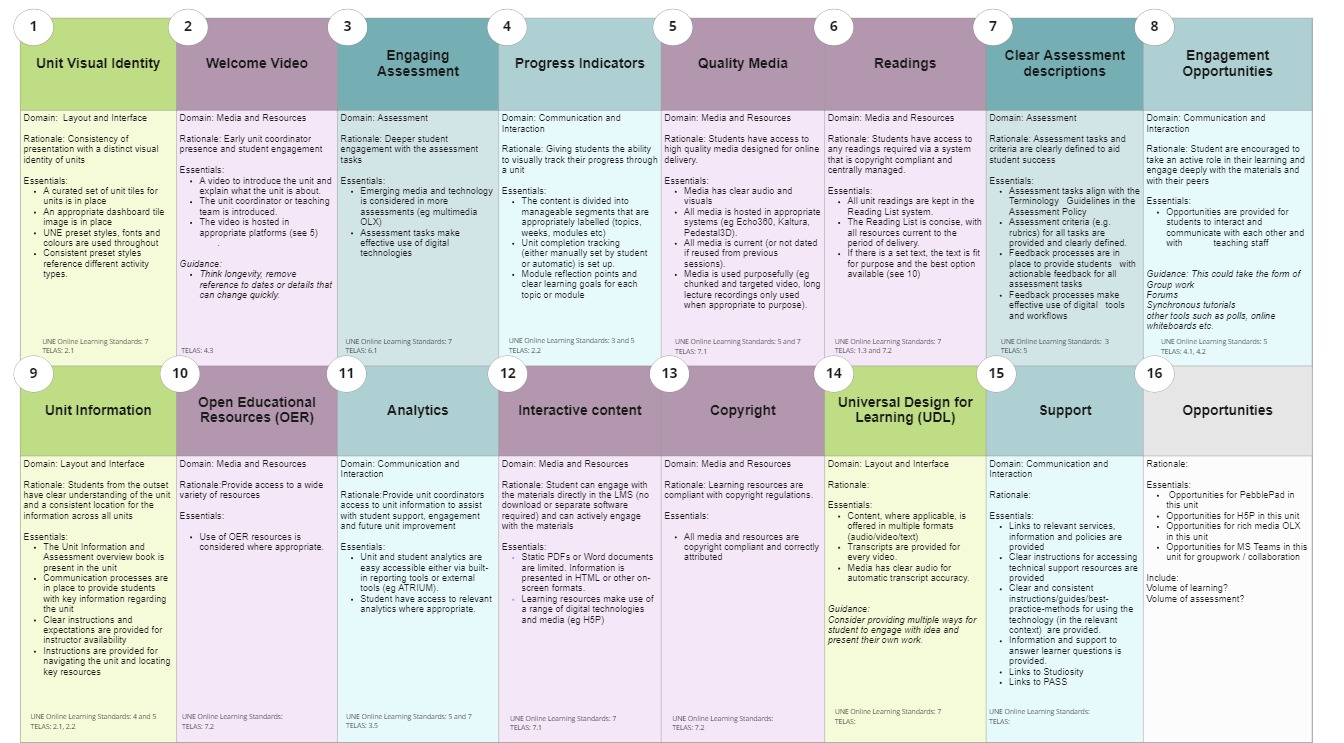

Domain: Layout and Interface
Rationale: Consistency of presentation with a distinct visual identity of units
Essentials:
Standards:
Domain: Media and Resources
Rationale: Early unit coordinator presence and student engagement
Essentials:
Consider: Video introductions to topics and/or assessment tasks
Guidance: Think longevity, remove reference to dates or details that can change quickly.
Standards: TELAS 4.3
Domain: Layout and Interface
Rationale: Students from the outset have clear understanding of the unit and a consistent location for the information across all units
Essentials:
Standards:
Domain: Media and Resources
Rationale: Students have access to any readings required via a system that is copyright compliant and centrally managed.
Essentials:
Standards:
Domain: Media and Resources
Rationale: Provide access to a wide variety of resources
Essentials:
Standards:
Domain: Media and Resources
Rationale: Learning resources are compliant with copyright regulations.
Essentials:
Standards:
Domain: Media and Resources
Rationale: Students have access to high quality media designed for online delivery.
Essentials:
Standards:
Domain: Media and Resources
Rationale: Student can engage with the materials directly in the LMS (no download or separate software required) and can actively engage with the materials
Essentials:
Standards:
Domain: Communication and Interaction
Rationale: Giving students the ability to visually track their progress through a unit
Essentials:
Standards:
Domain: Communication and Interaction
Rationale: Student are encouraged to take an active role in their learning and engage deeply with the materials and with their peers
Essentials:
Guidance: This could take the form of:
Standards:
Domain: Assessment
Rationale: Deeper student engagement with the assessment tasks
Essentials:
Standards:
Domain: Assessment
Rationale: Assessment tasks and criteria are clearly defined to aid student success; students are provided with feedback to support success
Essentials:
Standards:
Domain: Communication and Interaction
Rationale: Provide unit coordinators access to unit information to assist with student support, engagement and future unit improvement
Essentials:
Standards:
Domain: Layout and Interface
Rationale: All students can engage in learning in ways that maximise their success
Essentials:
Guidance: Consider providing multiple ways for student to engage with idea and present their own work.
Standards:
Domain: Communication and Interaction
Rationale: All students are able to access information and services that support learning
Essentials:
Standards:
Rationale: UNE remains a leader in online learning and digital innovation; UNE units utilise digital-first design
Essentials:
Standards: